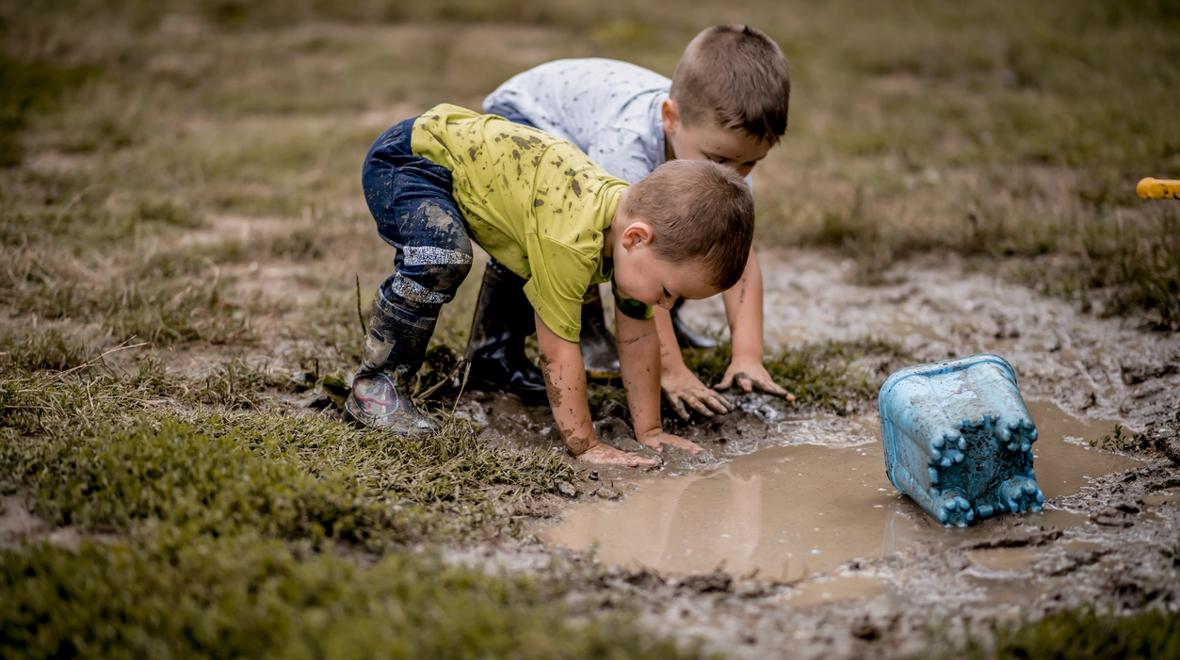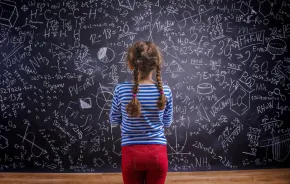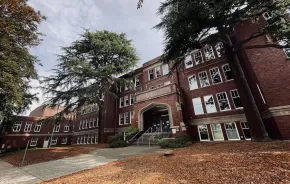
Photo:
Helping kids feel connected to the natural word and leaning about climate change through play. Photo: iStock
Editor's note: This article was sponsored by KidsQuest Children’s Museum.
No matter how much we want to protect our children from everything dangerous and scary, climate change is too important to keep hidden, and we are going to need our kids’ help to turn things around. But how do we teach our kids about climate change without scaring them to death?
At KidsQuest Children’s Museum, the answer is play.
“Play is how children connect to everything that they do. It’s how they process their world and understand things,” says Jamie Bonnett, Director of Education at KidsQuest Children’s Museum in Bellevue.
Environmental values and behaviors begin to develop around ages 5 to 8, and children aren’t developmentally ready to process the dangerous impacts of climate change before the third or fourth grade. But long before addressing melting ice caps and species extinction, it helps to lay a foundational worldview, that Richard Louv in “Last Child in the Woods” describes as “a world in which children and nature are reunited and the natural world is more deeply valued and protected.”
Caretakers of Wonder
Parents can — and should — start laying that foundation when children are small.
“The biggest thing is making sure that we’re not scaring children, and making sure that we are giving them concrete things to do and interact with,” says Bonnett. KidsQuest is a member of the national Caretakers of Wonder project, supported by the Institute for Museums & Library Services (IMLS).
“The project is really about how and where to start to address such a daunting topic in a way that is age-appropriate and making it life-enhancing,” says Bonnett. The project is developing environmental education methods geared to younger children that are designed to build compassion, climate knowledge, agency in pursuing solutions and hope for the future of our climate.
Compassion
“We want to make sure that we are connecting children with nature and giving them a chance to wonder,” says Bonnett. Exposure to many different life-forms, and interacting with them, can inspire that wonder. It doesn’t have to be charismatic megafauna such as whales and elephants. Humble creatures such as worms and bees are just as important to ecosystems, breaking down organic waste and pollinating plants. And they are just as effective as educational tools for small children.
“We talk about taking care of the Earth, that we are caretakers who are here to help. And we talk about other helpers, how the bees and the worms help us,” Bonnett concludes.
At KidsQuest, red wiggler worms are kept in a compost bin in the Bellevue Mercantile area on the second floor.
“We bring food waste into the museum and feed those worms, and when we’re feeding them, we bring the worms out of their case, show the kids what they look like and then put them all back in,” Bonnett explains. At any time, children can look inside the glass to watch the worms crawling around in food waste and turning it into compost.
An outdoor honeybee hive from Rainy Day Bees can be safely viewed up close from inside, thanks to the clever placement of the hive’s entrance near a window. For hands-on learning, KidsQuest has added a honeycomb exhibit to the museum’s Bellevue Mercantile area, where infographics teach families facts about bees, and children can use bee puppets to pollinate toy flowers. Rent Mason Bees is managing the mason bee boxes in the parking lot and along the outdoor Chickadee Trail. Because solitary mason bees do not have a queen to protect, and do not produce venom, they present very little risk of stings. Plus, “mason bees are really rad pollinators,” says Bonnett.
Agency and action
Teaching kids that they have agency as helpers and caretakers helps to inoculate them against the feeling of being overwhelmed that many people experience in the face of oversized crises such as climate change. In the Recycle Rebuild room at the museum, children are exposed to the concepts of material life cycles. Something as simple as collecting crayon nubbin bits in a jar to melt down into crayon pucks for large outdoor art projects gives them a concrete example of how they can make another choice, besides simply using things up, throwing them away and creating waste. Asking the questions, “What was this and what else could it be? How do we make sure it makes it to a place where it can be recycled into something else instead of just thrown away?” helps children start thinking critically about the choices they make.
Summer play
This summer, KidsQuest has several opportunities for children to learn through play in the outdoor Sticks + Stones Gallery.
“Kids may get a little bit messy, and that is just okay,” says Bonnett.
- Arts & Otter Pops: On Tuesdays, Thursdays and Sundays in July and August, kids can enjoy free icy treats while they make some cool art by playing with water and natural materials during activities such as painting rocks and making plant prints.
- Waterfest: On July 31, the Sticks + Stones Gallery will transform into a wading pool with boats and natural play materials. Waterfest is a chance to splash in puddles of joy (Okay, it’s water, but the kids are going to love it.). Remember to bring sunscreen, a towel and a change of clothes.
- Mud Play Day: On August 28, kids get down and dirty while making potions, stews and other creations with colored water and clay. Bathtime and laundry are inevitable, but the memory of uninhibited play in the mud is priceless.
Climate education at home
For small children, the backyard or the neighborhood park are as full of mystery and wonder as Yellowstone National Park. Make a point of going outside with your child and encouraging them to explore and observe. Notice birds and butterflies and ask your child questions about what they see. When your child comes home with a pocket full of rocks and treasures, don’t throw them out (at least not right away); take time to appreciate their discoveries and identify them. What kind of tree did the leaf come from? What animal made that shell? What should someone have done with that piece of plastic instead of throwing it on the ground?
As children reach school age, you can begin to talk more about ways they and your family can make a difference. Simple things such as wasting less and recycling contribute to your child’s budding environmental awareness and sense of responsibility.
“The biggest thing is not to lead with fear and not to get overwhelmed with the adult feeling that you have to do everything. Small changes do matter,” says Bonnett. She suggests picking one thing you can all do as a family to become more sustainable and making it a part of your life before asking, “Now what else can we do?”
“Lead with a sense of nature and what brings you joy. Then use that to move forward,” reminds Bonnett.
|
Sponsored by: |

|











